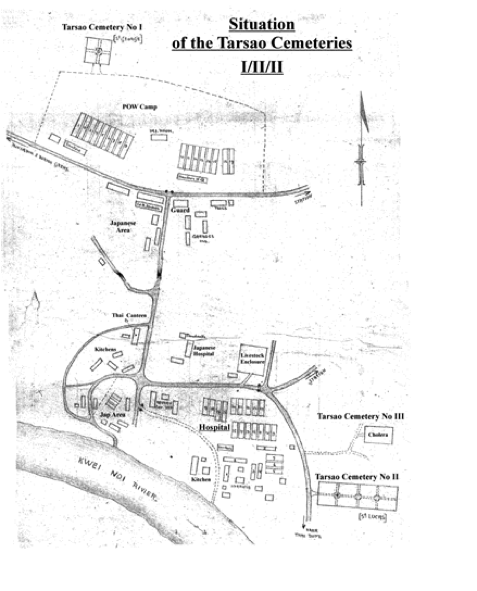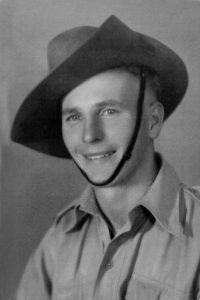Tha Sao, Tarsau 125.00km - Thailand
Tha Sao, Tarsau 125k – Thailand
Tarsau became Base Camp for Group 4 made up of ‘D’ Force which worked in the vicinity of Hellfire Pass.
Situated 130kms north of Non Pladuk, Thailand and 285 kms south of Thanbyuzayat Burma. Also known as Tarso, Ta Soe, and Tha Soa. The word Tha meaning pier in water.
It was also a staging camp for Forces moving north to work on the railway.
S and T Battalion arrived from Kanchanaburi toward late March having departed Singapore by rail 14 March 1943 to Non Pladuk. They were trucked from Komna Transit Camp to Kanchanaburi for a brief stopover. The Battalions remained at Tarsau where conditions were quite reasonable, and were engaged on clearing the path ahead for rail laying gangs for several weeks. The two battalions then parted company – S Battalion head north and T Battalion south. Tarsau had not prepared the POWs for what was ahead of them. S Battalion moved to the ‘D’ Force Camp at Kanyu II – located on top of a plateau above the Kanu I River Camp they arrived on 25 April 1943.
The camp was surrounded by large trees and roads transporting supplies and Japanese troops north to Burma. Heavily used by trucks the roads were badly rutted and muddy. Vehicles were frequently bogged. POWs passing through on foot found the roads were little more than tracks with potholes, stumps, rocks, etc. and during monsoon the roads were impassable.
Located at the River edge and originally ‘D’ Force Base Camp it later developed as a large hospital camp for all of ‘D’ Forces. It had three cemeteries with 806 men buried here.
As a hospital camp, Tarsau was appalling. ‘Lightly sick’ POWs knew if they went there they would probably never leave. Patients ensured their names were on work party lists whether they were well or not simply to escape Tarsau and its illnesses.
Established November 1942 Tarso Hospital Camp remained in operation until April 1944 during which time 15,029 patients had been admitted. The hospital was poorly sited close to River Kwae Noi. Accommodation consisted of 84 atap huts all in the usual state of collapse and in fact some huts did collapse on top of their inhabitants.
From July 1943 this hospital grew from a camp hospital to a base hospital for all of D Force Thai Administration Group 4.
Towards end of September 1943 and the end of the rail construction was the worst time for Base Hospital Camps with thousands of sick POWs evacuated by barge, rail and road to these crowded camps. Tarsau had as many as 3,000 sick.
Tarsau was one of first 3 hospitals established at the southern end of the railway. The other two were Kanchanaburi and Chungkai (mostly British). Supposedly these camps were in better condition than the jungle camps although accommodation was much the same and endured the usual overcrowding.
The Japanese policy was if sick POWs were unable to work, they were deemed useless, therefore better off dead – at least they wouldn’t have to be fed. It was common practice amongst Australian camps to set up a canteen whereby the meagre wages paid to the prisoners could be pooled and used to purchase additional food from local traders who plied their trade up and down River Kwae Noi to Japanese and POWs alike. Where possible, foodstuffs were purchased to aid the rapid recovery of sick POWs. For its nutritional value, eggs were eagerly sort after.
When the POWs were advised Hintok Road Camp section of the railway was completed the men would be moved north to work, and the sick were evacuated to Tarsau departing 23rd August. Travelling by barge they reached Tarsau late in the day and at dusk had to erect tents outside the main camp – as it was suspected the infected men carried contagious diseases. The following day the authorities changed this decision and the patients were moved into Tarsau’s crowded atap huts with slatted beds teeming with bugs and lice and each with about 60-80 men crowded together. The 2,000-3,000 English and Australian patients were haphazardly integrated with many varying diseases and illnesses.
There were virtually no medical supplies at this hospital.
The seriously ill and were placed in one hut where dozens of men died daily. The only others to be placed separately were those with ulcers. The stench was so terrible it was only the brave who entered their ‘ward’.
The following information was provided by Dick Ridgwell to Cheryl Mellor in 2017.
“I was evacuated (sick)to Tarsau Hospital Camp. It was terrible. Overcrowded with sick men everywhere and very few medical orderlies to care for them. There was always a terrible odour accompanying the men with ulcers. I gathered up blankets and tore them up for the ulcer ward.
I assisted around the hospital as much as I was able and helped hold down those men while orderlies scraped away the maggoty pus from POW’s limbs using a silver spoon. The pain was terrible for these men. Following this appalling procedure doctors would take the torn blankets which had been sterilised in boiling water in nearby 44 gallon drums placed over fires. These would be placed over the cleaned wound. This was the only procedure available for ulcer patients. There was nothing else.”
Below Dick Ridgwell
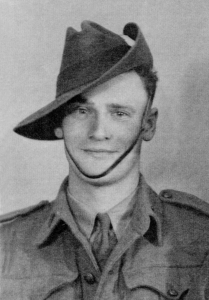
The patients who were able, assisted in washing men less mobile.
“I would bathe the men as they lay on their bamboo slatted ‘beds’. Patients included Les Kemp WX8543 and a few 2/4th gunners. There was one POW who had lost interest in his own hygiene, not that unusual but was rather unbearable for those nearby. Dick carried Peter Moate WX13562 outside and placed him near water to wash. Moate was evacuated with his tropical ulcer to Nacompaton, a Base Camp Hospital with better facilities.”
Below: Kemp
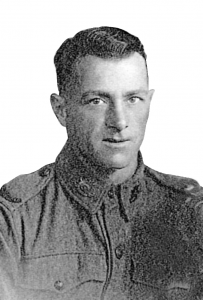
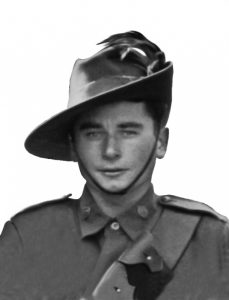
Right: Moate
Moate was recovered from Nacompaton when the war ended.
Kemp moved from Tarsau to Tardan and was at Chungkai when the war ended.
Ridgwell moved from Tarsau to Tamarkan, Chungkai, Nakom Nayok and was recovered from here when war ended.
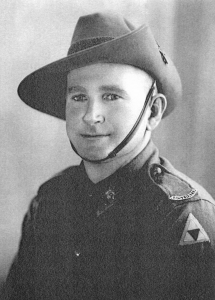
Above: WX5211 Pte Stan Currie confirmed he was with the burial party near Tarsau during Sep 1943.
Please read further about Tarsau Hospital Camp.
The following has been included to provide some insight into life and conditions in a ‘hospital Camp’.
25 Oct 1943 – from ‘War Dairies of Weary Dunlop’ P 298. Dunlop had transferred from Hintok and was recovering from malaria.
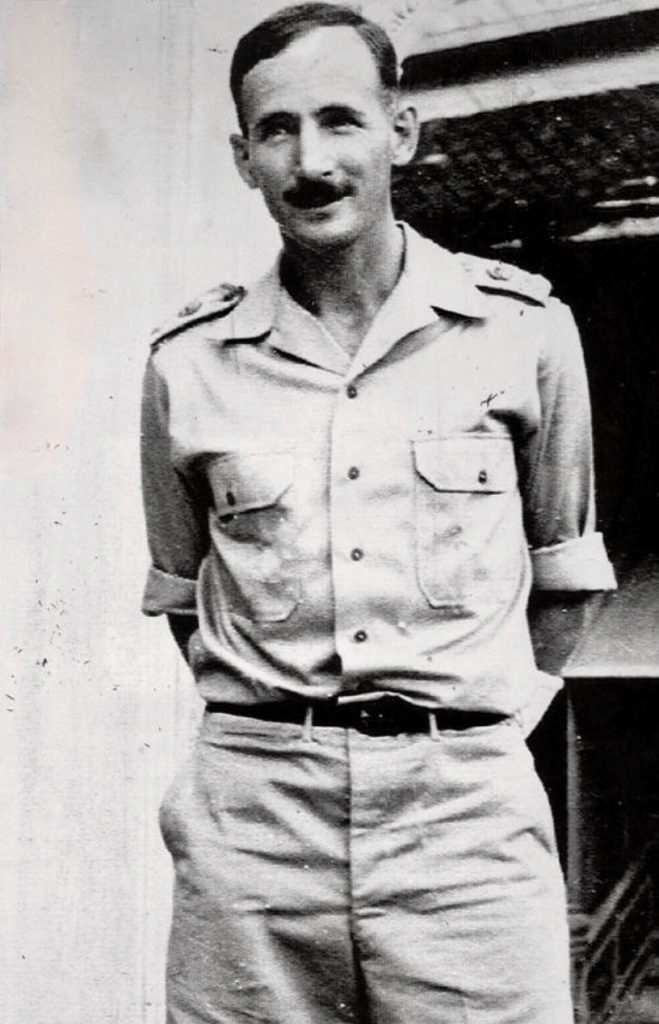
Dunlop transferred to Tarsau with 50 sick plus Capt McEwan, one dental patient, Reg Wright. Met by Lt-Col Harvey & other MOs on arrival.
“Tarsau now has a formidable system of parades: a great deal of time is consumed in numbering and checking all troops (all in Japanese).”
“The hospital today obtained some most useful drugs and money – 3000 (by grace of that magnificent man, Boon Pong)”. Read further about Boon Pong
“Things are much the same with difficulty in purchasing foodstuffs for hospital in sufficient quantity and in accordance with estimates.”
26 October 1943
Total in hospital 2461. Admitted 12; discharged 7; deaths 4.
Dunlop discussed his function in the area with Col. Harvey. Dunlop would take over the hospital and convalescent depot and to be responsible to Harvey as SMO. Dunlop would assume responsibility for discipline in area.
Lt-Col Harvey will officially liase with camp authorities and Nipponese HQ.
Dunlop proceeds to detail Tarsau facilities and hospital, recording those in charge, what changes will improve conditions and types of illnesses, wards and convalescent depot.
Dunlop mentions:
6 troublesome mental patients – a mental hut with fence is urgently required.
-
Anti-malarial work: should be appointed – some Malayan planters had good knowledge.
-
Wright AAMC to commence working medical wards of hospital & in lines with O, P, S and T personnel.
-
VD patient (an unusual thing) called to HQ to explain his infection (acquired in a Thai village). He left hospital area and decapitated himself by placing neck on railway line with oncoming train.
-
One of greatest problems is nutritional diarrhoea cases. Many patients going downhill & finally have difficulty taking food. Probably B2 factor is most important.
-
Dr Phil Millard is in charge Ulcer ward. Equipment and treatment is primitive.
-
Mostly place needs cleaning and vastly improved hygiene.
-
Scabies rampant and serious problem.
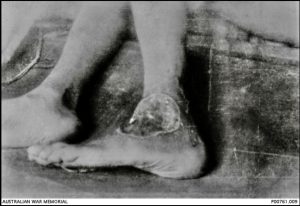
Tarsau (Tarsoe), Thailand. 1943.
Close up of a tropical ulcer on the ankle of a prisoner of war (POW). Tarsau, now known as Nam Tok, is 130 kilometres north of Nong Pladuk (also known as Non Pladuk), or 284 kilometres south of Thanbyuzayat. It was used by the Japanese as both a staging camp for POWs moving north to work on railway construction, and a base hospital during the period November 1942 to April 1944. During this period 15,029 sick passed through it, of whom 806 died. (Donor A. Mackinnon)
We wish to acknowledge AWM.
-
5 November 1943 Lt-Col McKellar is arrested.
-
Dunlop is arrested by Japanese kempis. He is beaten and officers are shot. Capt Brennan (dentist) is mentioned, Lt-Col McEarchern, Maj. Williams of Konyu origin. Okada, and military police search for radios.Dunlop’s friend Page is beheaded.
30 November 1943
Dunlop recorded in his diary: total 2407 patients.
135 Critical ward – serious malaria or advanced avitaminosis
200 Critical surgery ward – with large tropical ulcers
120 amoebic dysentery
220 chronic diarrhoea and bacillary dysentery
341 deaths since 1st August
27 Amputations resulting in 10 men on crutches
7 Mental patients
After Christmas the Camp was advised they would be moving further down the line by train.
At the beginning of 1944 the sick at Tarsau were graded – the heavy sick sent to Nacompaton and light sick to Chungkai.
Those who survived the line and arrived at Chungkai found it was a big camp where atap huts covered a large area. Earlier inmates had prepared a soccer pitch, a chapel and a well-tended cemetery. Not only was food of an improved quality it was was more plentiful! A few months later the patients were moved again down the line to Tamuang where the Japanese would draft fit men into work parties for Japan.
By March 1944 the majority of POWs were brought out of the jungles and concentrated at the main camps at Nacompaton, Non Pladuk, Tamuang, Kanchanaburi, Tamarkan and Chungkai. Some prisoners were retained at Tarsau until the end of April 1944.
The men from ‘F’ and ‘H’ Forces had all returned to Singapore by April 1944. Those POWs considered by the Japanese to be fit enough to travel to Japan from ‘A’ and ‘D’ Forces had been removed with many in transit and others waiting to depart.
There were 3 cemeteries including one for the cholera deaths. The other two were St Georges and St Lukes.
From May 1944 parties of POWs were sent back up-country to work at any one of over 60 camps between Kinsaiyok and Sonkurai. Many of these camps were built on sites previously occupied by coolie labourers. In reality the POWs were returning to similar conditions to those experienced during ‘speedo’ of 1943.

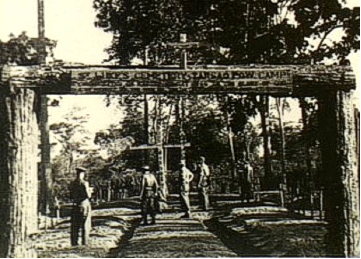
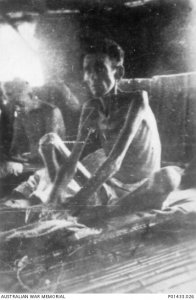
Refer to the following website for more information,
http://www.britain-at-war.org.uk/WW2/Death_Railway/html/tarsao_hospital.htm
or from Colour Patch The men of the 2/4th Australian Machine Gun Battalion 1940-1945 by Murray Ewen.
Tarmakan or Tha Muang became the Base Camp for Group 4 from mid 1944 to mid 1945. It was here many 2/4th were selected as fit to work in Japan.
____________________________
Those who died at Tha Sao Base Hospital include:
WX9361 Michael BARLETT died beri beri at Tarsau on 7 Dec 1943. He departed Singapore by rain for Thailand with ‘D’ Force Thailand S Battalion.
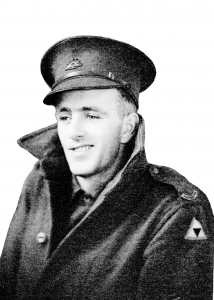
WX8681 DAVEY, Roy William (Bluey) died dysentery and avitaminosis 1 July 1943 aged 28 years. With ‘D’ Force S Battalion was evacuated from Hellfire Pass Cutting to Tha Sao Hospital Camp.

Bluey Davey was born 1915 East Perth to Herbert and Ethel Olive Davey. Davey enlisted AIF 23 Oct 1940 and later joined ‘A’ Company 5 Platoon. Bluey was a mate of Ron Badock. Both were Kalgoorlie Boys.
WX11580 MCGLINN, Donald Spencer
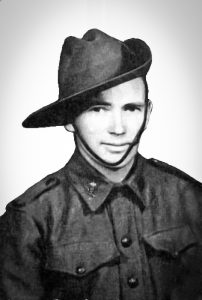 died Tarsau 15 July 1943 of dysentery and avitaminosis aged 28 years. He had been evacuated from Hellfire Pass Cutting. McGlinn from Dangin, employed by WAGR as a Railway Platelayer, enlisted AIF 9 April 1941and later joined 2/4th’s ‘C’ Coy 11 Platoon as a reinforcement. Don’s first cousin Frank McGlinn was in 10 Platoon.
died Tarsau 15 July 1943 of dysentery and avitaminosis aged 28 years. He had been evacuated from Hellfire Pass Cutting. McGlinn from Dangin, employed by WAGR as a Railway Platelayer, enlisted AIF 9 April 1941and later joined 2/4th’s ‘C’ Coy 11 Platoon as a reinforcement. Don’s first cousin Frank McGlinn was in 10 Platoon.
Frank survived to return home to Australia.
WX8777 SANDERSON, John (Jack) William, Sgt (promoted 125 Feb 1942)

died beri beri and dysentery at Tarsau on 18 July 1943 aged 35 years. Jack Sanderson with ‘D’ Force S Battalion was evacuated sick from Kanu 1.
He enlisted AIF 23 Oct 1940, later joining 2/4th’s ‘B’ Coy, originally with 7 Platoon, Corporal Jack Sanderson was promoted and transferred to 9 Platoon. This NCO was highly thought of in ‘B’ Company.
WX15690 CARR, John (Jack) Murray
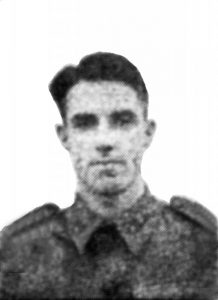
evacuated to Tarsau from Hellfire Pass Cutting – died cerebral malaria and beri beri 23 July 1943 aged 28 years.
Born Katanning 1915 to John Augustine and Evelyn Mary Carr, Jack enlisted AIF 11 Aug 1941, later joining ‘B’ Company 8 Platoon.
WX8689 MacMASTER, Hector Cecil Stanley (Billy/Jock)

Promoted Corporal on 11 Feb 1942.
died beri beri 25 July 1943 aged 37 years. Two days after his 2/4th mate Jack Carr died. MacMaster was born in Leslie, Scotland 1908. He enlisted from the Goldfields to AIF 23 Oct 1940 and later joined 2/4th’s ‘B’ Company 8 Platoon. MacMaster was involved in one of the local pipe bands – East Goldfield Pipe Band.
Below: MacMaster standing with bagpipe far left.
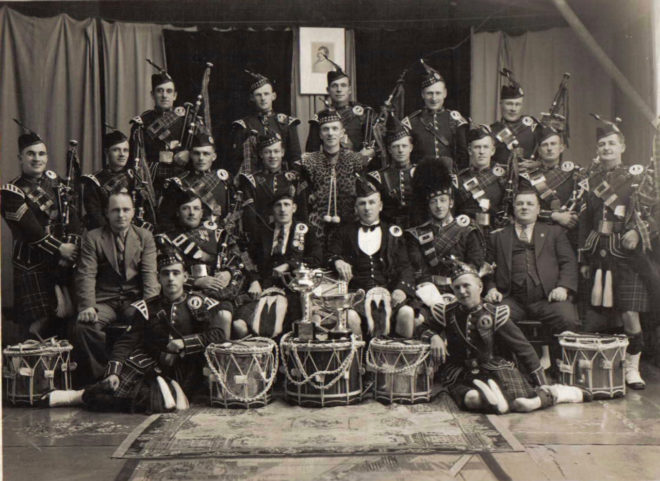
WX17739 LIVINGSTONE, John Scott
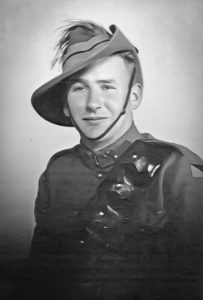
Was born Ireland to Robert and
Ellen May Livingstone. The family migrated to Western Australia.
Livingstone was earlier enlisted with the Light Horse.
He died with malaria and tropical ulcers 4 September 1943 aged 21 years having been evacuated from Hintok Camp, Hellfire Pass Cutting.
WX123553 SPOUSE, Sydney Francis (Syd)
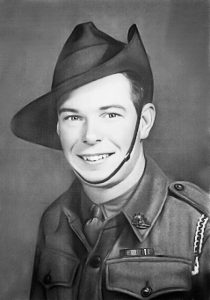
Syd enlisted AIF 24 May 1941 and later joined ‘A’ Company as a reinforcement with 6 Platoon. Born Subiaco 1921 to Stanley Garfield and Elizabeth Valentine Spouse.
He was evacuated out of Kanyu II Camp to Tarsau where he died 23 October 1943 of heart failure aged 22 years.
WX8621 MCDONALD, Keith Kitchener (KK)
Very popular ‘KK’ died cholera 25 November 1943 aged 25 years. Evacuated sick from Konyu II where he had been working on ‘hammer & tap’ with Cowboy Matthews. Matthews was on tap and KK hit his hands with the hammer and reeled over. A Japanese guard was immediately drawn to the yelling and declared McDonald sick with cholera. He was carried back to Konyu II and evacuated to Tarsau Hospital Camp. KK’s brother Clarrie McDonald WX8620 was also working with ‘D’ Force Thailand S Battalion. Clarrie survived to return home.
The brothers were born in Geraldton and enlisted 18 Oct 1940 and joined 2/4th’s ‘A’ Company. KK was in 6 Platoon and L/Cpl Clarrie McDonald was in 5 Platoon.
TARSAU HOSPITAL CAMP, THAILAND – October 1943
‘This camp has been overflowing with sick and dying men evacuated here mostly from ‘D’ Force camps around the Hellfire Pass Cutting who had survived ‘Speedo’ and now ill with tropical ulcers and other illnesses brought on by overwork and starvation.
Conditions improved remarkably since the ‘Big Australian’ Weary Dunlop arrived. The appalling conditions at Tarsau – POWs knew they must avoid Tarsau Hospital at all costs – because you would never leave alive – had come about largely due to the disinterested attitude of the senior British officer, a Lt-Col in the RAMC – British Royal Army Medical Corps – a man with long years of service who had apparently given up trying to obtain improvements from the Japs.
It was said the officer could not bring himself to talk to Japanese coolies – it was beneath his dignity! He spent his days at the river fishing and turned his back on his men. (his batman carried his fishing gear to Tarsau).
The British Officer showed Weary Dunlop around the camp. The cookhouse litter was heaped out in open, unsanitary latrines with swarms of flies, terrible rations, almost nil medical supplies, no canteen and morale which was rock bottom. The stench would have been horrific.
Dunlop asked him how this dreadful state of affairs had come about?
Affecting surprise, the Lt-Col replied “Is it as bad as that? He hadn’t noticed”.
Word quickly passed around the Camp that their despised senior officer received a public dressing-down from Dunlop who was 2nd I.C. Dunlop lastly told the officer ‘to go back to his fishing – leave the camp to be run by someone sufficiently interested to do so!’ The Lt-Col’s greatest sin was following his first rebuff by the Japanese, he never again could bring himself to talk to such unpleasant people.
Weary endured at least two punishment ordeals occurring in his first few days at Tarsau. By Christmas the Camp was well improved and on 27 Dec 1943 the whole camp was a designated a hospital with a single office admin. staff. The camp was to be divided into medical, surgical, dysentery and infectious wards and organised on heavy and light sick basis.’

